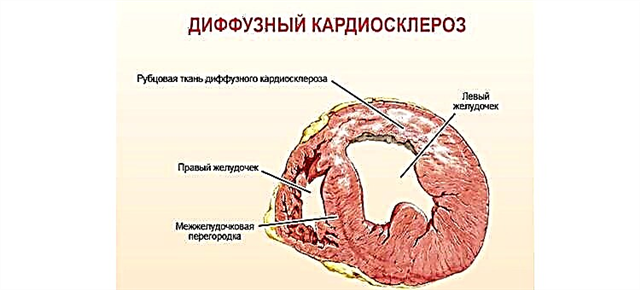Nasal discharge (muconasal secretion) is a fluid that is produced by unicellular glands (goblet exocrinocytes) in the nasopharyngeal mucosa. Excessive mucus is formed in the nasal cavity due to damage to the respiratory system, either infectious or allergic agents. If a yellow liquid flows from the nose, what could it be? The yellow color of the discharge indicates the presence of protective cells (phagocytes), decay products of soft tissues and pathogens in them.
As a rule, a yellow-green secret occurs due to the development of a bacterial, less often fungal infection in the respiratory tract. The type of pathology can be determined by the nature of nasal discharge and concomitant clinical manifestations. Correct diagnosis makes it possible to draw up the most appropriate and effective treatment regimen for respiratory disease.
Causes
If a yellow fluid flows from the nose, in most cases this signals the infectious nature of the inflammation. Respiratory diseases of bacterial and fungal genesis do not pose any danger to human life, but only with the correct diagnosis and adequate treatment. Complications develop only if the pathology was detected out of date.
Delayed treatment of bacterial inflammation in the nasal cavity is fraught with damage to the blood vessels, optic nerve, meninges and hearing aid.
Bacterial rhinitis
 Yellow nasal fluid is very often a symptom of bacterial rhinitis. The provocateurs of inflammation in the respiratory organs are pathogenic microbes - meningococci, streptococci, Haemophilus influenzae, etc. In addition to rhinorrhea (acute rhinitis), patients have:
Yellow nasal fluid is very often a symptom of bacterial rhinitis. The provocateurs of inflammation in the respiratory organs are pathogenic microbes - meningococci, streptococci, Haemophilus influenzae, etc. In addition to rhinorrhea (acute rhinitis), patients have:
- nasal congestion;
- decreased sense of smell;
- burning and itching in the nose;
- high temperature;
- increased sweating;
- constant sneezing.
As a rule, with a bacterial rhinitis, the fluid flowing from the nasal cavity has a yellowish or greenish tint with impurities of pus. Most often, pathology occurs as a complication of influenza, ARVI and other viral diseases.
Untimely elimination of the microbial flora in the nasopharynx can cause inflammation of the paranasal sinuses and the development of rhinosinusitis.
Rhinosinusitis
Rhinosinusitis (sinusitis) is an acute or sluggish inflammation of the mucous membranes in one or more paranasal sinuses. In 45% of cases, the disease occurs as a complication of acute rhinitis, nasopharyngitis, influenza and ARVI. A yellowish discharge indicates a bacterial or fungal origin of a respiratory infection.
Depending on the location of the inflammation, the following types of sinusitis are diagnosed in patients:
- sphenoiditis - damage to the sphenoid sinus, which is located in the body of the sphenoid bone inside the skull at the level of the nasal septum;
- sinusitis - damage to one or both maxillary sinuses (sinuses) located in the thickness of the maxillary bone at the level of the cheeks;
- ethmoiditis - damage to the cells of the ethmoid labyrinth, which is part of the ethmoid bone that separates the cranial cavity from the nasal cavity;
- frontal sinusitis is a lesion of one or both of the frontal sinuses, which are located inside the skull behind the eyebrows.
A disease characterized by inflammation of all of the paranasal sinuses is called pansinusitis.

Nasopharyngitis
Nasopharyngitis (epipharyngitis) is an acute or chronic inflammation of the mucous membranes of the nasopharynx, accompanied by redness, edema and tissue swelling. The most common cause of the development of the disease is a bacterial, fungal or viral infection. The starting point in the development of nasopharyngitis is always a viral infection. Therefore, the disease is most often preceded by viral rhinitis, colds, rhinorrhea, pharyngitis, etc.
Typical manifestations of epipharyngitis include:
- subfebrile fever (37-37 ° C);
- headache;
- sore throat and nasal cavity;
- profuse discharge of mucus from the nose;
- nasal voice;
- lacrimation.
Delayed treatment of nasopharyngitis can lead to the penetration of the infection into the lower parts of the respiratory system, which is fraught with the development of tracheitis, bronchitis, pneumonia.
With the timely detection and treatment of ENT diseases, unpleasant symptoms recede already on the 4th day. To prevent recurrence of inflammation, doctors recommend using herbal adaptogens - Rhodiola rosea, Chinese magnolia vine, and vitamin-mineral complexes.
Maxillary sinus cyst
Drops of yellow water escaping from the nasal passages may indicate the appearance of cysts in the maxillary (maxillary) sinuses. Neoplasms occur due to blockage of the ducts of goblet exocrinocytes in the nasal mucosa. Despite the impossibility of the outflow of mucus, the glands continue to produce a viscous secretion, as a result of which cysts filled with fluid are formed in the soft tissues.
In most cases, a cyst appears due to acute or chronic inflammation of the upper respiratory tract. The characteristic manifestations of pathology include:
- alternate laying of the right, then the left nostril;
- discharge of yellow drops from the nose when the head is tilted;
- painful sensations in the maxillary sinuses;
- headaches and nasal breathing difficulties.
Cysts do not respond to drug treatment; neoplasms can be eliminated only through surgical intervention.
Fluid dripping from the nasal passages is the contents of the cyst. If mucus turns brown over time, this may indicate the presence of bleeding inside the maxillary sinuses. In this case, urgent hospitalization of the patient is necessary, tk. the penetration of blood into the cranium can provoke irreversible processes.
Treatment methods
Yellow liquid from the nose appears in the case of bacterial or fungal inflammation of the nasopharynx. To eliminate the undesirable manifestations of the disease, it is necessary to destroy the infection and speed up the process of removing muconasal secretions from the paranasal sinuses and nasal passages. Conservative treatment of respiratory diseases consists in the use of antibacterial or antimycotic, as well as local therapy.
Antibacterial therapy
If the yellow liquid flowing from the nose has an unpleasant putrid odor, most often this indicates the bacterial nature of the inflammation. Antibiotics are used to destroy microbes in the body and directly in the lesions. In the absence of complications, the patient is prescribed a drug of the penicillin series. If this antibiotic causes an allergic reaction in the patient, it is replaced with macrolide or cephalosporin antimicrobial agents.
As a rule, the antibiotic therapy regimen includes:
- systemic drugs ("Amoxicillin", "Panklav", "Cefuroxime") - destroy bacteria throughout the body;
- nasal drops with antibiotics (Sofradex, Isofra, Bioparox) - inhibit the activity of microbes directly in the lesions.
Important! Premature withdrawal of antibiotics can provoke a relapse of inflammation.
Antimicrobial drugs can only be used as directed by the attending physician. Inappropriate use of drugs and premature refusal of drugs are fraught with re-development of the infection and complications.
If the cause of inflammation of the nasopharynx is a fungus, the patient is prescribed a course of antimycotic (antifungal) therapy.As a rule, fungal sinusitis is treated with local remedies (Intraconazole, Ketoconazole), but in severe pathology, the infection can only be eliminated with systemic antimycotics - Nystatin, Pimafucin, Mikomax, etc.
Local therapy
 Yellow liquid from the nose is easily eliminated with topical drugs, but only in the initial stages of the development of the disease. Most often, drugs in this group are used as an adjunct to the main antibacterial or antimycotic therapy. Regular instillation of antiseptic, anti-inflammatory and vasoconstrictor agents into the nasal passages can reduce the severity of symptoms and thereby facilitate the course of the disease. A working mirror of the Frank online casino is available at https://casinopoisk.com/frankcasino/ play Frank Casino slots.
Yellow liquid from the nose is easily eliminated with topical drugs, but only in the initial stages of the development of the disease. Most often, drugs in this group are used as an adjunct to the main antibacterial or antimycotic therapy. Regular instillation of antiseptic, anti-inflammatory and vasoconstrictor agents into the nasal passages can reduce the severity of symptoms and thereby facilitate the course of the disease. A working mirror of the Frank online casino is available at https://casinopoisk.com/frankcasino/ play Frank Casino slots.
Local therapy involves the use of the following drugs:
- vasoconstrictor drops (Rinotaiss, Nesopin, Lazolvan Rino) - reduce puffiness and restore the outflow of mucus from the paranasal sinuses;
- mucolytics ("Rinofluimucil", "Sinuforte", "Sinupret") - reduce the viscosity of the muconasal secretion and accelerate its evacuation;
- local antiseptics (Chlorophyllipt, Miramistin, Furacilin) - disinfect the nasal mucosa and prevent the development of microbes;
- solutions for rinsing the nose ("Aqualor", "Dolphin", "Quicks") - reduce puffiness and cleanse the nasal cavity from mucus and pathogenic agents;
- moisturizing drops ("Pinosol", "Salin", "Morenazal") - prevent drying out of mucous membranes and a decrease in local immunity.
At the stage of regression of bacterial inflammation, patients are advised to undergo physiotherapy. In particular, laser and magnetic resonance therapy helps to restore blood circulation in the affected mucosa and thereby speed up the healing process.
Conclusion
A yellow tint of muconasal secretion indicates the development of fungal or bacterial flora in the respiratory tract. In addition to rhinorrhea (acute runny nose), patients have nasal congestion, fever, malaise, muscle pain, weakness, watery eyes. The most common cause of pathological symptoms is a bacterial rhinitis, nasopharyngitis, sinusitis, ethmoiditis, a cyst in the maxillary sinus, etc.
It is possible to eliminate bacterial and fungal infections in the nasal cavity with the help of systemic antibiotics and antifungal agents. Local preparations - antiseptic, anti-inflammatory, vasoconstrictor and mucolytic nasal drops - can speed up the healing process of tissues. Adequate and timely elimination of inflammation prevents the spread of infection and the emergence of formidable complications.



